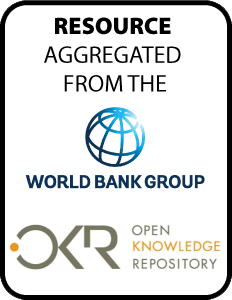Resource information
This paper identifies the low-elevation
coastal zone populations and developing regions most
vulnerable to sea-level rise and other coastal hazards, such
as storm surges, coastal erosion, and salt-water intrusion.
The focus is on the rural poor in the low-elevation coastal
zone, as their economic livelihoods are especially
endangered directly by coastal hazards and indirectly
through the impacts of climate change on key coastal and
near-shore ecosystems. Using geo-spatially referenced
malnutrition and infant mortality data for 2000 as a proxy
for poverty, this study finds that just 15 developing
countries contain over 90 percent of the world’s
low-elevation coastal zone rural poor. Low-income countries
as a group have the highest incidence of poverty, which
declines somewhat for lower-middle-income countries, and
then is much lower for upper-middle-income economies. South
Asia, East Asia and the Pacific, and Sub-Saharan Africa
account for most of the world’s low-elevation coastal zone
rural poor, and have a high incidence of poverty among their
rural low-elevation coastal zone populations. Although
fostering growth, especially in coastal areas, may reduce
rural poverty in the low-elevation coastal zone, additional
policy actions will be required to protect vulnerable
communities from disasters, to conserve and restore key
coastal and near-shore ecosystems, and to promote key
infrastructure investments and coastal community response capability.


